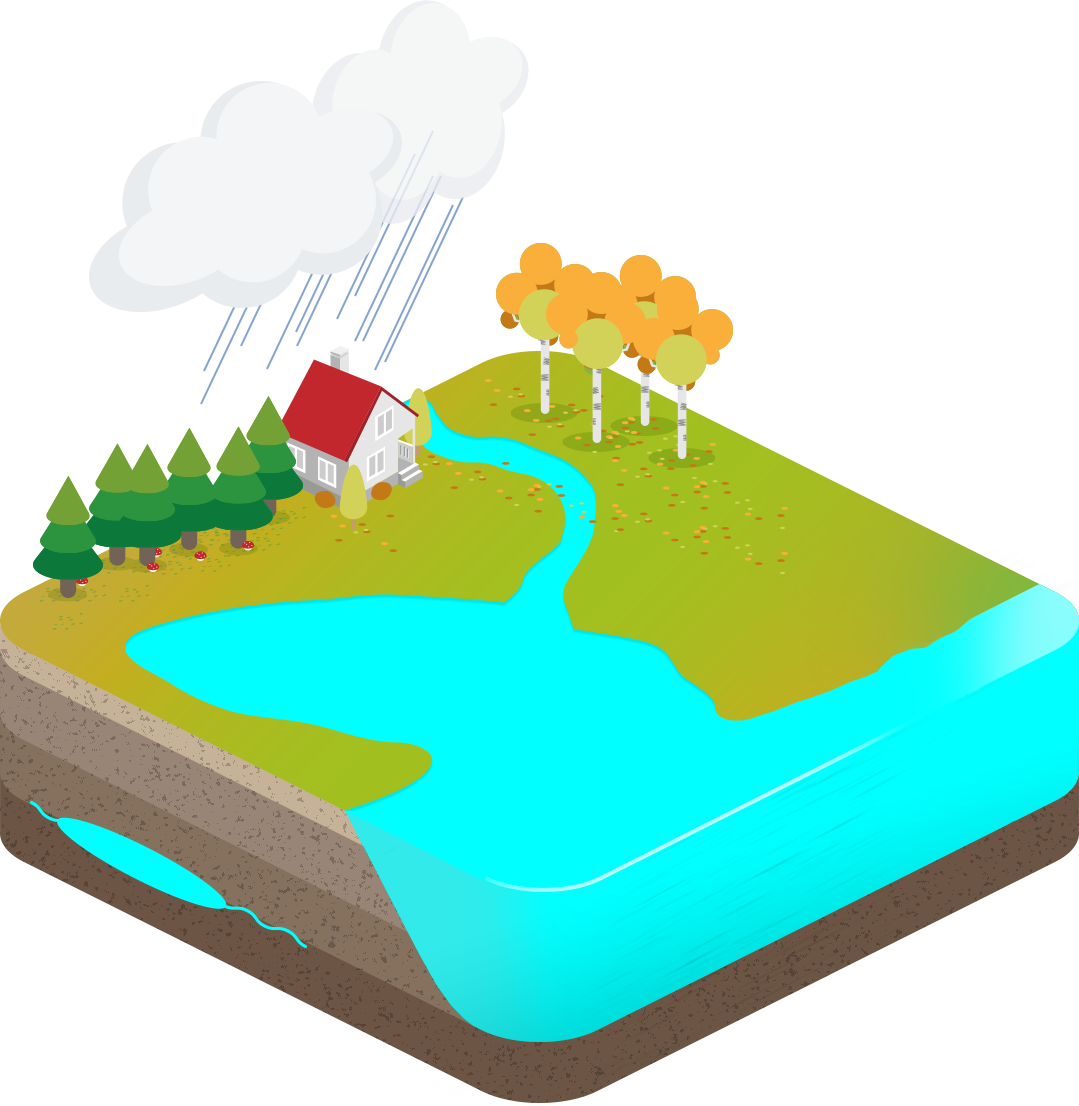Local water situation
Rainfall
Rainfall, or precipitation, indicates the amount of water falling onto the ground in different forms within a certain time. One millimetre of precipitation means that one litre of water has fallen on an area of one square meter, corresponding to a one-millimetre-thick layer.
Surface water temperature
Surface water temperature indicates the thermal conditions in the surface layer (20 cm) of a water body in the ice-free season. In addition to the size of the water body, the water temperatures is affected by air temperature and wind conditions.
Soil moisture
Soil moisture describes the volume of water bound to the soil. Soil moisture is particularly affected by precipitation, temperature, snow melt and evaporation.
Water level
Water level describes variations in the height of the water surface in lakes and the sea. Factors that affect the water level in lakes include precipitation, runoff, evaporation as well as flows entering and leaving a lake. Factors primarily affecting the water level in the Baltic Sea include currents through the Danish straits, wind conditions, atmospheric pressure and the ice situation.
Groundwater level
Pohjaveden korkeus kuvaa pohjaveden pinnankorkeuden vaihteluja. Niihin vaikuttaa pohjavesivesimuodostuman koko, sademäärä, sulamisvedet ja haihdunta. Muutokset ovat hitaita ja vedenkorkeus laskee tyypillisesti kesän aikana. 1
Runoff
Runoff indicates the volume of water moving on the ground surface and in the soil. Snowmelt and heavy rain increase this volume and may cause floods.
Select theme


- Greater than
average for the period - Average
for the period - Smaller than
average for the period - average for the period
statistical data not collected

Send your observations
